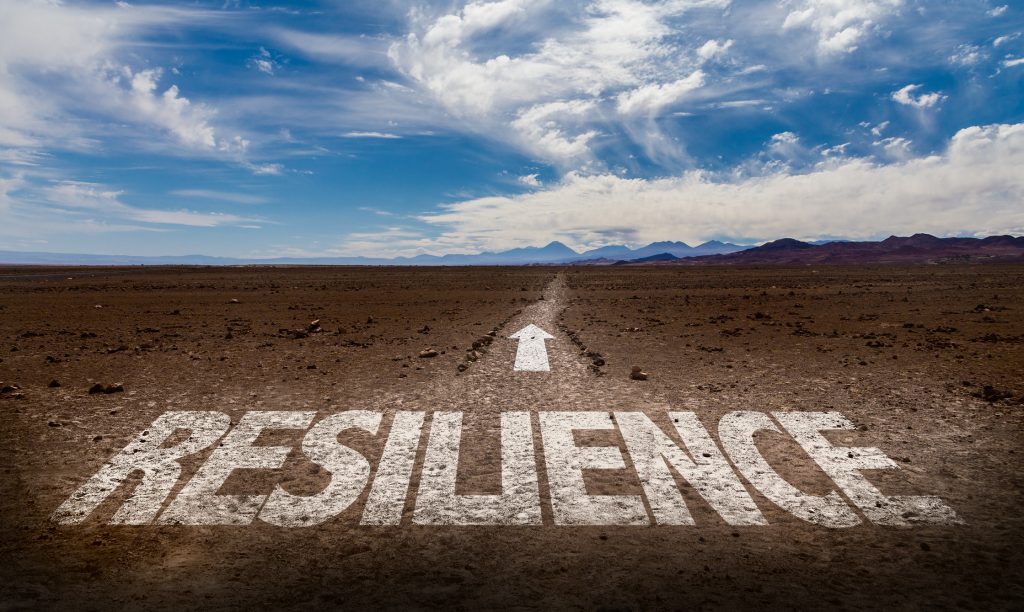
Thinking Traps to Escape Routes: How to scale the biggest barrier to resilience
Lately, our team has been talking about, sharing, and practicing our resilience skills in a way we never imagined. It’s a fascinating topic to think and train for resilience and yet you only know if your investment in the practices has been worth the effort when things get real. We’ve had many conversations lately about our resilience discovers these last few weeks.
This pandemic of COVID-19 is certainly not the first time my resilience has been tested and it’s probably not the first time for you either. Two years ago in Costa Rica when numerous things did not go as planned the path I was walking on presented an 8-foot bao constrictor. I was already in an emotionally compromised state and yet I responded to this new friend with a “hey, looks like this path is the one you like, soooo I’ll take the path over there instead.”
This was a time where my resilience surprised me. So often we are so much stronger than we imagine and in those unexpected moments, we rise to meet the challenge.
The Language of Resilience
We need to understand the language of resilience, the words of resilience and start getting comfortable with the complexities of our emotional health. We need to be, during this poignant time, having more conversations with our partners, our families, friends, and our children to be curious and willing to explore what makes us resilient, even when it is awkward and we feel overwhelmed.
This is not an isolated time and one thing resilient people know is that in the process of living a human life, hard things happen. Often many hard things. Admitting that is important but not the place to stay for too long. Resilient people also look to see what is ahead.
A Time of Expedited Growth
Tal Ben-Shahar one of Positive Psychology’s greatest thinkers, said in a recent webinar I was on, this is a “time of expedited growth.” Yes, things are challenging AND we have a chance, right now, to build our resilience muscles. It’s similar to an intense workout at the gym, not pleasant but a critical step in the process of getting stronger.
We also need to be talking about the barriers to resilience and how to work our way, over, under, around, and through them. Dr. Karen Reivich, Andrew Shatte, and Dr. Aaron T. Beck all are pioneers working with resilience with the military and all different kinds of people and organizations. Dr. Reivich identifies THE biggest barrier to resilience as Thinking Traps also called faulty thinking.
Thinking Traps
Thinking traps are the assorted ways that we jump to conclusions, usually triggered by fear, and fall down the rabbit hole of negative emotions. I’ll talk about the downward spiral of negative emotions and the upward spiral of positive emotions in a future post, however here I want to share the 8 thinking traps and the corollary, what our team calls, Escape Routes. .
.
CLICK HERE to download this sheet.
Many of us have a favorite pattern and tend to favor one of these more than the others. The task is not to spend years trying to discern why that is. The task is to recognize the patterns, to feel when we fall into the trap (and typically it’s a physical, sensory experience) then reach for the inquiries of the Escape Routes.
Escape Routes
The Escape Routes can be simplified even further. First, to head off a full-fledge emotional hijack, take a breath. Yes, a long, slow, deep breath has been shown, to scientifically, put the emergency brake on your nervous system.
Then ask the question, “What am I not seeing?” and then be open to new possibilities. Often the thinking is based on stories and with a moment to pause and shed some light on them, they prove to no longer be true.
It’s in these glimmering a-ha moments that resilience multiplies.
If you want to know more, I highly recommend the book, “The Resilience Factor: 7 Keys to Finding Your Inner Strength and Overcoming Life’s Hurdles” by Karen Reivich and Andrew Shatte.
Leave a Comment